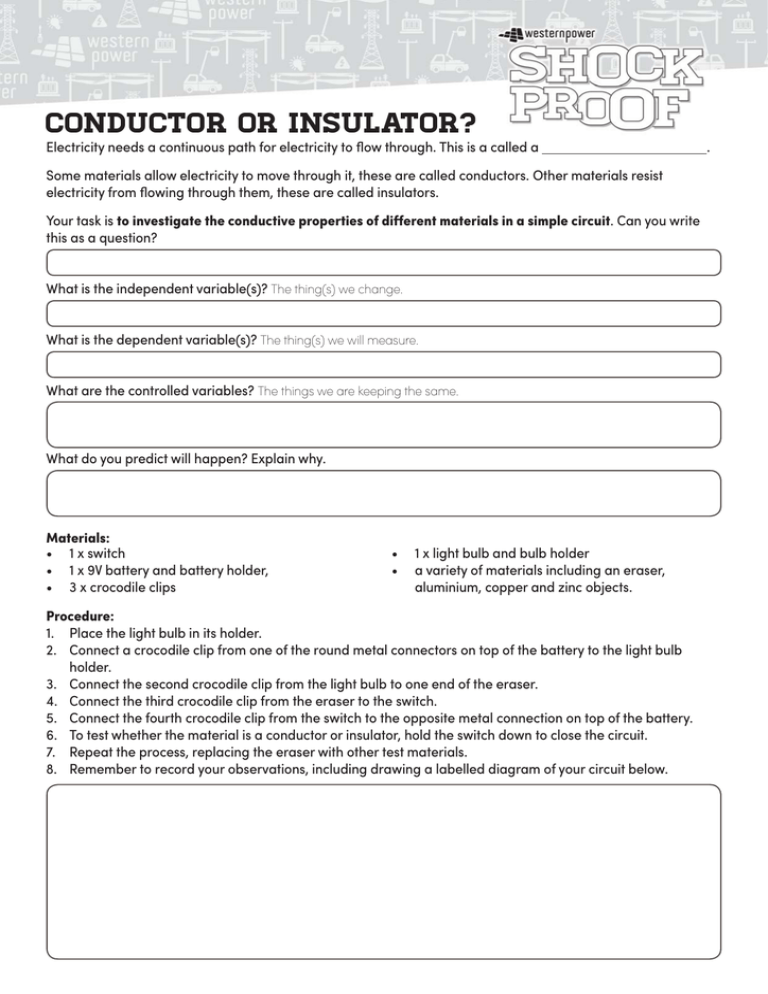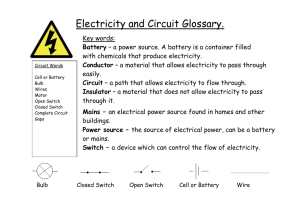Conductor or Insulator?
advertisement

CONDUCTOR OR INSULATOR? Electricity needs a continuous path for electricity to flow through. This is a called a Some materials allow electricity to move through it, these are called conductors. Other materials resist electricity from flowing through them, these are called insulators. Your task is to investigate the conductive properties of different materials in a simple circuit. Can you write this as a question? What is the independent variable(s)? The thing(s) we change. What is the dependent variable(s)? The thing(s) we will measure. What are the controlled variables? The things we are keeping the same. What do you predict will happen? Explain why. Materials: • 1 x switch • 1 x 9V battery and battery holder, • 3 x crocodile clips • • 1 x light bulb and bulb holder a variety of materials including an eraser, aluminium, copper and zinc objects. Procedure: 1. Place the light bulb in its holder. 2. Connect a crocodile clip from one of the round metal connectors on top of the battery to the light bulb holder. 3. Connect the second crocodile clip from the light bulb to one end of the eraser. 4. Connect the third crocodile clip from the eraser to the switch. 5. Connect the fourth crocodile clip from the switch to the opposite metal connection on top of the battery. 6. To test whether the material is a conductor or insulator, hold the switch down to close the circuit. 7. Repeat the process, replacing the eraser with other test materials. 8. Remember to record your observations, including drawing a labelled diagram of your circuit below. . Discussion: Write a statement to summarise your findings. Why did this happen? Did the results match your prediction? Why or why not? Were there any safety considerations? If yes, describe them. Evaluation: What challenges did you have completing this investigation? What could we do to improve the investigation?



